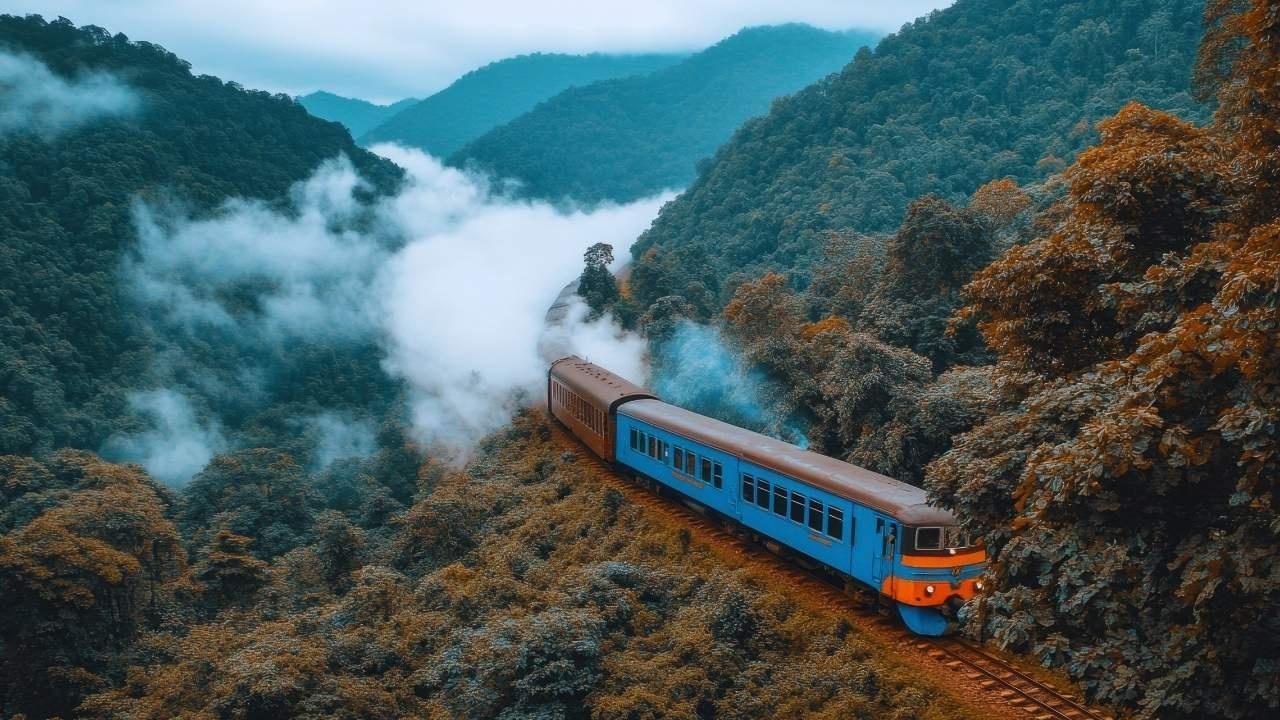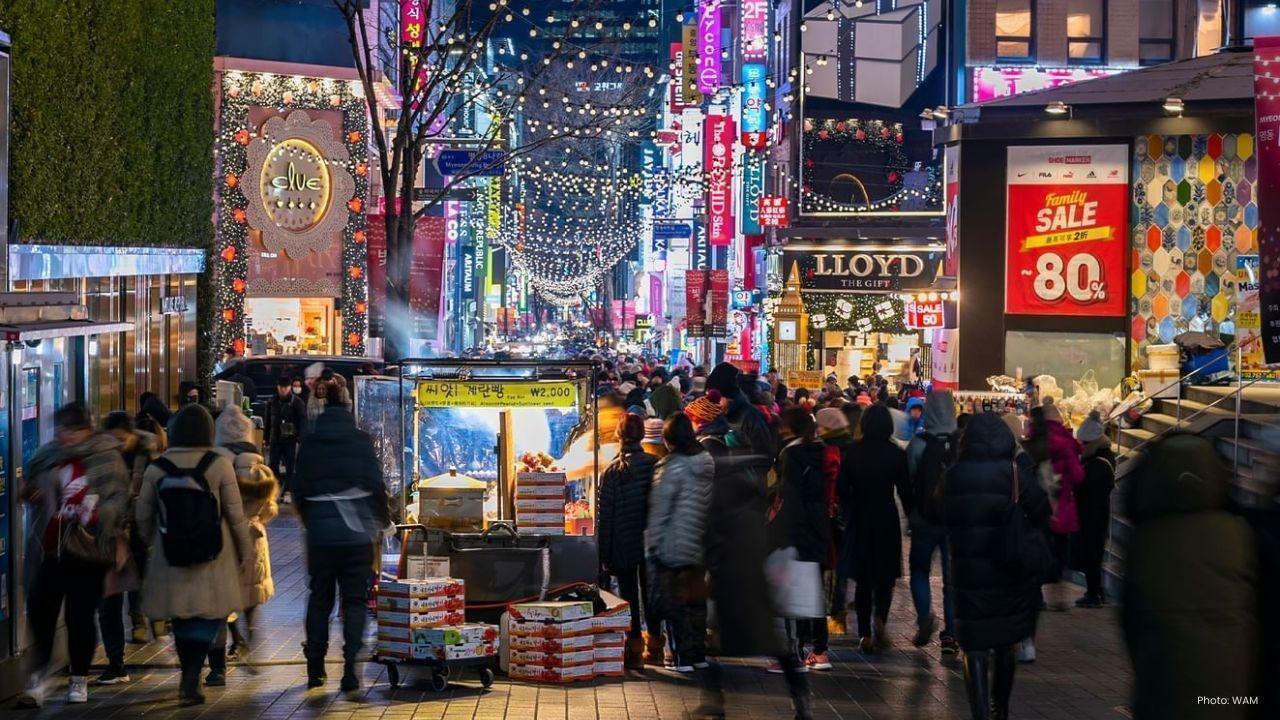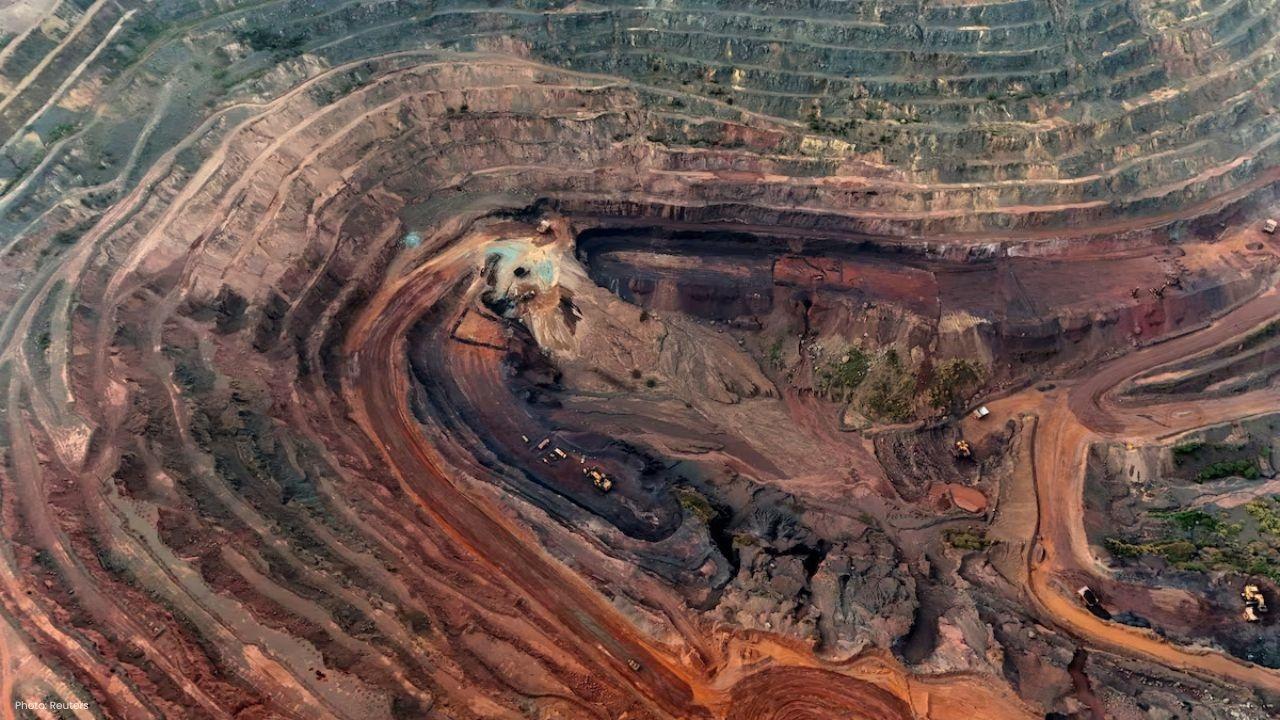
Join 10k+ people to get notified about new posts, news and tips.
Do not worry we don't spam!

Post by : Anis Farhan
Once eclipsed by air travel, long-distance train journeys are enjoying renewed interest. Modern travellers are choosing scenic rail trips for the opportunity to slow down, soak in surroundings and travel with a smaller environmental footprint. Beyond moving people from A to B, these trips now offer cultural encounters, comfort and a distinct sense of discovery. This piece examines why scenic rail is regaining momentum, points to standout routes, and assesses implications for the wider travel sector.
Several factors are driving the revival of train travel:
1. Slow Travel Appeal: Today’s travellers increasingly prioritise depth over pace. Scenic trains let passengers linger over landscapes, relax and experience journeys as part of the trip itself rather than merely a transfer.
2. Sustainability Concerns: Trains usually produce fewer emissions than airplanes. As awareness of carbon footprints grows, many choose rail where feasible to reduce travel’s environmental cost.
3. Comfort and Convenience: Rail travel offers roomier seating, freedom to move about and onboard dining. Numerous scenic services provide wide windows, observation cars and sleeper cabins that mix comfort with exploration.
4. Nostalgia and Romance: For many, train travel evokes timeless charm. From classic European routes to heritage lines across Asia, passengers seek journeys that recall a bygone era.
5. Photography and Social Media: Scenic rail routes produce striking imagery—mountain vistas, rivers and coastal panoramas—which passengers share widely, inspiring others to book similar trips.
In 2025 certain lines stand out for attracting travellers:
1. The Glacier Express, Switzerland:
Famed as the slowest express, this alpine crossing rewards passengers with sweeping views of glaciers, high bridges and snow-laced peaks.
2. The Eastern & Oriental Express, Southeast Asia:
Linking Singapore, Malaysia and Thailand, this luxury route blends tropical vistas, colonial architecture and immersive regional culture.
3. The Rocky Mountaineer, Canada:
Winding through the Canadian Rockies, this service highlights crystal lakes, rugged summits and abundant wildlife, with daytime carriages designed for viewing.
4. The Shongololo Express, Southern Africa:
Traversing countries such as South Africa and Namibia, this voyage combines diverse ecosystems, safari stops and cultural encounters across the region.
5. The Darjeeling Himalayan Railway, India:
A UNESCO-listed narrow-gauge line, it delivers intimate Himalayan panoramas, tea estate scenery and colonial-era towns to both domestic and international visitors.
Scenic trains now sell experiences as much as transport:
1. Dining on the Move: Fresh, regionally inspired menus and themed dining make meals aboard part of the journey’s appeal.
2. Observation Cars: Large windows and glass-roofed coaches give uninterrupted sightlines, turning travel time into prime photo opportunities.
3. Cultural Stops: Scheduled calls at villages and historic towns invite passengers to explore local markets, crafts and heritage between legs of the trip.
4. Wellness and Relaxation: Some services now include spa treatments, yoga classes and quiet lounges to complement the adventurous aspects of travel.
5. Onboard Entertainment and Storytelling: From live music to expert commentary on landmarks, curated programming deepens passengers’ connection to places they pass.
There are several practical and emotional reasons travellers opt for rail:
1. Stress Reduction: Train journeys avoid many airport procedures, offering a smoother, less fragmented travel experience.
2. Continuous Connection with Nature: Unlike flying, rail lets passengers watch landscapes unfold without interruption, creating a stronger sense of place.
3. Social Interaction: Trains encourage shared moments—communal dining, conversations and onboard activities—that foster connections with fellow travellers.
4. Flexibility and Accessibility: Rail lines often provide more boarding options and regional stops than flights, enabling tailored itineraries and access to remote areas.
5. Cost-Effective Luxury: While premium services command higher fares, many scenic routes offer mid-range options that bring memorable experiences without airline prices.
Innovations are helping rail services meet modern expectations:
1. Digital Booking Platforms: Intuitive ticketing, seat selection and itinerary planning make booking scenic train trips straightforward.
2. Mobile Apps for Engagement: Apps supply live maps, stop details and cultural context to enrich passengers’ understanding of the route.
3. Smart Observation and Entertainment: Onboard screens and augmented-reality features provide layered information about landscapes and landmarks.
4. Social Media Integration: Encouraging guests to share their experiences builds online communities and inspires new travellers to try rail journeys.
The rise of scenic rail has clear local benefits:
1. Boost to Regional Tourism: Train stops draw visitors to lesser-known towns and attractions, increasing spending and visibility for those areas.
2. Job Creation: Operations of both luxury and standard services create roles for hospitality staff, conductors and local guides.
3. Infrastructure Development: Growing demand encourages investment in track upgrades, safety measures and passenger amenities.
4. Promotion of Local Culture and Cuisine: Onboard dining and curated excursions bring attention to regional foods, crafts and traditions, supporting local economies.
Rail travel offers environmental advantages over short-haul flying:
1. Lower Carbon Emissions: Especially when powered by electricity or hybrids, trains typically emit less CO2 per passenger than aircraft.
2. Promotion of Slow Travel: Longer, more intentional journeys reduce the frequency of short flights, lowering cumulative emissions.
3. Responsible Tourism Practices: Many operators adopt eco-friendly measures like waste reduction and sourcing local supplies to lessen environmental impacts.
4. Awareness and Education: Passengers often learn about local ecosystems and conservation efforts during trips, fostering more responsible travel choices.
There are limits and obstacles to the sector’s growth:
1. Capacity Limitations: High-demand luxury services can sell out quickly, making advanced reservations necessary.
2. High Operational Costs: Upkeep, staffing and logistics add expense, which can drive ticket prices upward.
3. Seasonal Variations: Weather and seasonal access issues can restrict service in mountainous or remote regions.
4. Infrastructure Constraints: Not every country has the rail network required to support scenic or premium operations.
5. Competition from Air Travel: Despite the appeal of rail, aircraft remain faster for long distances and may still be the practical choice for many trips.
Into 2026, scenic rail looks set to expand and evolve:
1. Expansion of Routes: Operators are investigating new corridors, including underserved domestic and international options.
2. Integration with Experiential Tourism: Partnerships with hotels, cultural institutions and adventure providers will create more comprehensive itineraries.
3. Technological Enhancements: Expect smarter onboard tech—augmented reality, live guides and upgraded amenities—to enrich the passenger experience.
4. Personalized Travel: Greater customization in cabins, pricing and schedules will allow travellers to shape trips to their needs.
5. Growing Awareness: With sustainability and wellbeing rising on travellers’ agendas, scenic rail presents an appealing alternative to conventional travel.
The resurgence of train travel signals a change in how people want to journey: more deliberate, culturally richer and environmentally mindful. From alpine panoramas to heritage lines, scenic rail offers memorable experiences that support local economies and sustainable tourism. As these services continue to adapt, they promise not only to move passengers but to reconnect them with landscapes, history and community—reminding travellers that the journey itself can be the destination.










India Wins First Women’s World Cup 2025 Title
India lifts its maiden Women’s World Cup 2025 title! Harmanpreet Kaur’s team stuns South Africa in a

Manuel Frederick, 1972 Olympic Bronze Goalkeeper, Dies at 78
Manuel Frederick, a member of India’s 1972 Olympic bronze hockey team, has died in Bengaluru at 78 a

Muhammad Hamza Raja Wins IFBB Pro Card Puts Pakistan & UAE on Global Stage
Pakistani bodybuilder Muhammad Hamza Raja earns IFBB Pro Card in Czech Republic, showcasing Dubai’s

Shreyas Iyer’s Recovery Underway After Spleen Laceration in Sydney ODI
Shreyas Iyer is recovering after a spleen laceration sustained while taking a catch in the Sydney OD

Qatar Ready to Host FIFA U-17 World Cup 2025 in Aspire
Qatar confirms full readiness to host the FIFA U-17 World Cup 2025 from November 3–27, with world-cl

Wolvaardt’s 169 Sends South Africa Into Women’s World Cup Final
Laura Wolvaardt’s 169 powered South Africa to a 125-run semi-final win over England, booking a place